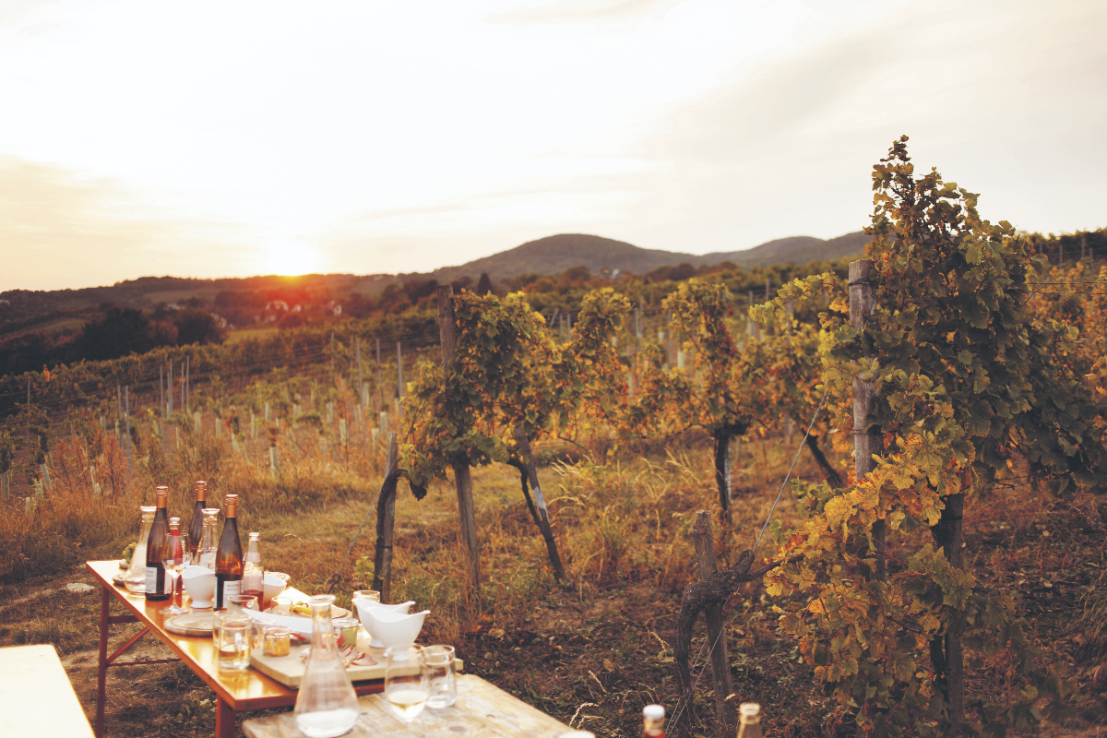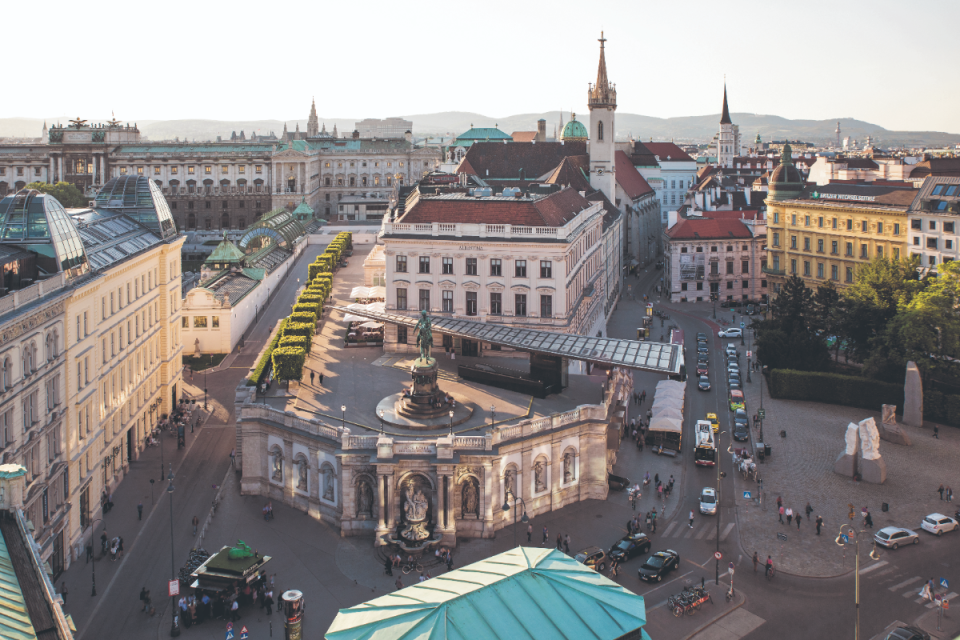Vienna has brilliant wine. Why is no one talking about it?
Why is no one talking about Austrian wine? Asks our columnist Libby Brodie


Why is no one talking about Vienna and wine in the same sentence? Asks our columnist Libby Brodie
When considering where to travel for a wine-inspired minibreak, Vienna is probably not your first thought – but it should be. The biggest wine producing capital city in the world, Vienna is home to the globe’s largest urban vineyard. You can stroll through the centre’s shops and art galleries and, in 20 minutes, bask among vines, overlooking the city with a glass of local wine in hand.
For a wine lover like me, it was an exciting prospect. Typically, Vienna is recognised as the capital of music and art – so before the wine, let’s talk a tiny bit about that. The city boasts four opera houses and no stage shows the same production consecutively, so one can see something different every night. Having been home to Beethoven, Mozart and Brahms, classical music is everywhere and, rather magically, there is still a “ball season” where Viennese waltzes are danced through the evening.
Having been the fifth largest city in the world in the 19th century, the streets are lined with buildings of imposing grandeur and every corner surprises with styles from Baroque to Renaissance to Gothic. This is architecture designed to impress and charm – and it does. Designed as a spiral, spinning out from the 1st to 23rd district, I stayed at Hotel Topazz Lamee in the 1st district, steps away from St Stephen’s Cathedral, marking the very heart of Vienna. I strolled past the cathedral and the long queues for the famous SacherTorte cake at Hotel Sacher, to a seat at Café Mozart.

We’re getting to the wine – but first, the coffee houses are not to be missed. It was the retreating Ottoman Empire in the 1680s who left their sacks of coffee beans behind and led to the Viennese falling in love with their caffeine fix. They are the places that philosophers and artists, from Trotsky to Sigmund Freud, used to gather and exchange ideas and the venues still buzz with conversation today. Another embodiment of Vienna is the Würstelstand, or sausage stand.
There are many throughout the city, but the Bitzinger, the most famous, is topped by a large green rabbit in tribute to artist Dürer by modern artist Ottmar Hörl. All walks of life gather at these stands, from politicians leaving the office late to opera goers. It typifies the Viennese way of living: despite looking expensive, the philosophy here is one of social democracy and a “blended society”. The city prides itself on its excellent social housing, clean streets, affordable healthcare, and cheap, efficient public transport.
It has been voted the world’s most liveable city for many years and it also took steps to safeguard its green spaces in the 1970s while other, less forward-thinking towns, were building on them. It is to these green spaces I head now, taking an old-fashioned tram silently up to the vineyards of the 19th district. It is incredible to go from the buzz of a Capital city to the birdsong and breeze of the hills in under half an hour. In the distance I can see the snow capped Alps.
Read more: The Long Weekend: Schnitzels and schmetterlings in Vienna
Over the summer months, various winery pop-ups appear to welcome walkers enjoying the sunshine and views. You can hike or bike around the 600 hectares of vines, stopping every so often for a refreshing glass of wine. 90 per cent of Vienna’s is white and the most recognisable style is the field blend, named because it consists of a minimum of three grape varieties from the same field. These wines tend to be crisp, fresh, and aromatic. They are often the house wine in local restaurants and with so little being produced, almost none is exported.
The sparkling, called Sekt, is also popular, as is Austria’s leading grape variety, Grüner Veltliner. On Wine Hiking Day, this year 28-29 September, thousands walk the hills over four different routes and gather in pop-up bars to fill their glasses. Wine taverns hang pine branches outside to show they’re open. The Heuriger Mayer am Pfarrplatz once housed Beethoven as he worked on Symphony No. 9 and has been producing wines since 1683.
In summer the vine-lined courtyard hosts musicians, and serves Austrian buffets of roast pork and cheeses by waitresses in dirndl dress. For those after finer dining, next door is the oldest restaurant in Vienna, Pfarrwirt, with white tablecloths and large modern-art lined walls. Back in the city centre, Zum Schwarzen Kameel has been in existence for 400 years. Outside, terrace tables spill into the street, where a mix of students, elderly couples and builders hang out. Inside, the place glows with polished dark wood panelling, low hanging lamps and gold tiles, as waiters dance between the tables with dishes of thinly sliced ham, one of their specialities.
A short walk across the Danube River to 2nd District and I pop into the cool and cosy Vinifero Weinbar run by Claire Yuan, a founding member of the Female Wine Collective in Austria. Yuan wanted to create an unpretentious place “like the extended living room of a friend” to share her love of organic and biodynamic wine, something Austria is increasingly enjoying. This sentiment is also shared by the impossibly grand Palais Coburg. Their wine archives stock 60,000 bottles, the oldest from 1727.
One of the Palace’s five expert Sommeliers guide you around their underground cellars, pouring glasses at each stop on the tour. One cellar is designed like the hull of a ship, another houses a bottle of D’Yquem from every vintage since 1893. Vienna is “slow living” without being static, full of historic grandeur without being stuffy. It is as flooded with food and wine as it is with art and music and there is a vibrant simplicity to the pleasures of this city, that seems both forward-thinking and timeless. Pass me the Sekt, this oenophile is sold.
VISIT VIENNA YOURSELF
Return Flights are from £175 with Austrian Airlines; Hotel Topazz Lamee costs around £260 per night including breakfast. For more information visit the Vienna Tourist Board at wien.info/en



